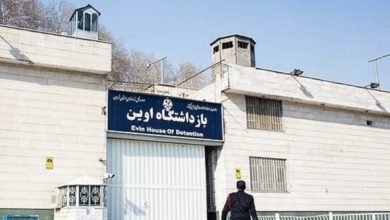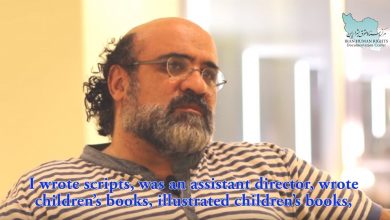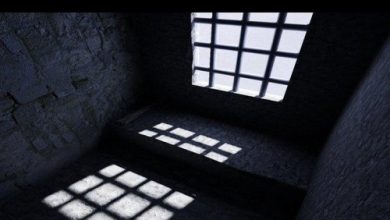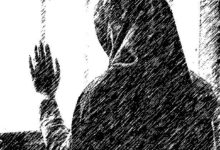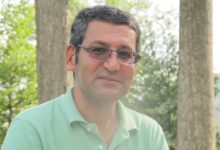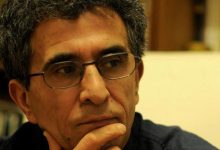Witness Statement: Tania Ahmadi Kaliji
Ahmadi Kaliji is a web blogger, and a vocal and outspoken critic of Iran’s death penalty. Her articles criticizing the stoning of women attracted the attention of the Iranian authorities, and led to her multiple arrests. In her witness statement, she describes how the same Iranian regime that executed her mother, a prominent leftist combatant, arrested her twice in the wake of the June 2009 elections. After her last arrest, she was thrown into a room where she was drugged and brutally tortured. Ahmadi Kaliji left Iran in February 2010.
Full Name: Tania Ahmadi Kaliji
Date of Birth: 16 September 1981
Place of Birth: Sari, Mazandaran, Iran
Occupation:: Doctor (Pathologist), Journalist and Activist
Interviewing Organization: Iran Human Rights Documentation Center (IHRDC)
Date of Interview: April 19, 2010
Interviewer: IHRDC Staff
This statement was prepared pursuant to an in person interview with Tania Ahmadi Kaliji. The statement consists of 61 paragraphs and 8 pages. The interview was conducted on April 19, 2010. This statement was approved by Tania Ahmadi Kaliji on April 20, 2010.
Witness Statement
1. My name is Tania Ahmadi Kaliji. I am 28 years old. Before I fled Iran, I worked as a pathologist at Milad Hospital in Tehran.
2. Over the past three years I have been arrested and/or detained five times because of my web blogs and my social activism. During my last detention in January 2010, I was brutally tortured. My torturers drugged me so that I lost consciousness. When I woke up, I saw that my index finger had ink on it. I believe this was because my finger was used to stamp a document confessing to crimes. I still am not sure if I made a confession, and if so, what crimes I confessed to.
3. In January 2010, a couple of weeks after my last arrest, I received an official court summons. I fled Iran soon after.
My Activities
4. Although I worked as a doctor full-time, I was also involved in journalism and activism in support of women’s and children’s rights in Iran.
5. I started writing at the age of 16. I eventually started my own blog titled “khonyagar-e khamoosh” [silent musician] where I posted short stories, poems and articles.
6. I was also involved with the One Million Signatures Campaign for women’s equality in Abhar, Iran, where I was living at the time. A family member introduced me to the work of the Campaign. After I signed my name on the petition1 in 2007, I was given petition sheets to collect signatures in different cities, on buses, on taxis and at work.
7. In addition to the collection of signatures, I worked on other projects promoting women’s and children’s rights. Also, through the Campaign, I focused on efforts to stop the stoning and execution of women and children.
8. As my involvement with the Campaign grew, I started to write about its activities on my weblog. In this way, I hoped to disseminate information among the female populace about their rights.
1 The petition circulated by the One Million Signatures Campaign is an effort by women activists to reform gender discriminatory laws in Iran.
Arrests Prior to the June 2009 Election
9. I was first arrested in April or May 2007. At that time, I was working at the Emdadi Hospital [Relief Hospital] of the city of Abhar in the province of Zanjan, Iran. I was arrested in my home for blogging. I was taken to the Zanjan Public Information Office (Daftar-e Setad-e Khabari) for interrogation.2
10. I was arrested the second time in Tehran on December 4, 2007 for participating in the annual Student Day demonstrations. That year, the Student Day events took place on December 4 instead of the usual date of December 7.3 At the time, I was standing outside the gates of Tehran University passing out flyers for the group “Students for Freedom and Equality” (Daneshjouyan-e Azadi Khah va Barabari Talab). I was also taking photographs and video at the event so the authorities arrested me.
11. My third arrest took place in May or June 2008 in Abhar, Iran. According to the arresting officers, I was brought in because of my alleged cooperation with opposition groups outside the country and my role in dispatching news to foreign television networks.
12. Around the time of my third arrest, I gave financial help to a couple of my friends who had fled to Turkey. The authorities alleged that my financial contributions were donations to foreign political organizations planning to overthrow the Islamic Republic, and thus I had acted against national security.
13. With respect to the allegations that I funneled news to foreign media outlets, I suspect that this was a reference to my interviews with Radio Farda and Radio Zamaneh, as well as a series of articles I wrote for the Stop Stoning Forever campaign.
14. I was held for three days and interrogated for 14-15 hours each day. My interrogators wanted me to write down information about people I knew and any internal links between people inside Iran and people outside whom they alleged were conspiring to topple the government.
15. After I was released, I was fired from my job in Abhar. I went to Tehran to look for work. I found a job at a hospital in Tehran but was fired from that job after my employer found out about my arrests. Apparently no one wanted to hire me because of my prior activities. I decided to maintain a low profile. Eventually, after five months, I was offered a job at Milad Hospital.
The 2009 Election
16. During the lead up to the recent elections, I was in Tehran. When the candidates were announced, voters fell into two camps. One camp wanted to boycott the elections altogether and the other camp wanted to acknowledge the legitimacy of the election race and vote. After some wavering, I decided that I would cast a vote for Mir-Hossein Mousavi because he represented the best chance for securing at least some reforms in society, including increased rights for women.
17. After making my decision, I became active in the Green Movement in support of Mousavi by collecting signatures and disseminating information about his candidacy through the Internet.
2The Public Information Office (Daftar-e Setad-e Khabari) is a government office where people are taken for interrogation.
3Student Day in Iran marks the anniversary of the murder of three students of the University of Tehran on December 7, 1953 by Iranian police in the Pahlavi era. Every year, to mark this event, university students organize demonstrations at their institutions.
The Protests
18. After the election results were announced, there was a strong sense among the people that the vote count was fraudulent. People took to the streets to demand their votes back.
19. The first protests were large processions of people walking long distances in silence while holding up peace signs. In Tehran, most of the processions started in 7 Tir Square and walked towards Karim Khan Street. Other processions started in Argentine Square and moved towards Azadi Square, or started from the East and moved towards Arya Shahr.
20. I worked at Milad Hospital during the bloodiest days of the protests. I saw police forces in Nissan vehicles repeatedly bring dead bodies and injured people to the hospital. Some of the injured were barely alive. However, the police forbade us from treating the injured protestors that were admitted to hospital.
21. On July 21, 2009, police forces brought in a protestor who had been shot in the leg. The police asked a doctor to apply a bandage to the wound quickly so they could transport him to be interrogated. When I intervened and asked where the protestor had been shot, one of the intelligence officers pushed me aside and accused me of gathering information. They did not give us all the information we needed to treat the wounded, and they did not allow treatment in many cases. I later found out that the person shot in the leg was arrested around Meghdad Base after a picture of Ayatollah Khamenei was set on fire. This happened nearby, so they brought him and the other injured to our hospital.
Arrest Following the June 2009 Election
22. I was arrested for the fourth time in September 2009 after the presidential elections in Tehran. I received a call on my work line instructing me to report to the Public Information Office (Daftare Setad-e Khabari) on Vesal Shirazi Street at a designated time to answer questions.
23. I had heard about what happened to people at that Office. They sometimes transferred people directly to Evin Prison. I called my father and asked him to come to Tehran and accompany me to the Office.
24. The interrogation turned out to be really intense. I was kept in a small room in solitary confinement for three days, and questioned for 7-8 hours a day. It is common for people who are politically active, or at least who the Iranian regime suspects to be politically active, to be held in solitary confinement so that they cannot communicate with like-minded detainees.
25. I recognized my two interrogators from my first interrogation. They had come to Zanjan to interrogate me more than two and a half years ago. One of them went by the name of “Haj Saeed.” He wore glasses. The other one called himself Mr. Sadeghi. He is a notorious interrogator. I think the name “Sadeghi” must be an alias because he freely introduces himself. I believe these two handle the case files for all women activists and Leftists and both are on the “women’s team” of interrogators (the interrogation team that is responsible for questioning women activists who are arrested). I think this because when I checked with my friends who had been interrogated and compared our recollections of their appearance, we concluded that we were interrogated by the same two men. Since they had first interrogated me, I had switched my mobile phone SIM card three times. Nevertheless, it was evident from their questions that they had been monitoring my phone calls on my house line, mobile phone and even my work line.
26. My interrogators asked me many questions about my activities and those of my associates – all of whom they knew by name. They asked me: “who organized the protests?” “Why do you spread news to other countries?” “Who are your connections?”
27. They asked me why I went to the protests. They wanted to know what my goal was and whether I wanted to overthrow the government. I denied this accusation.
28. They also asked me about the goals and the views of the women’s movement and whether the movement is for or against the system. They asked me about the whereabouts and activities of certain women activists. They wanted me to reveal the list of people I knew who lived outside the country but maintained internal contacts inside of Iran and whom they thought had helped organize the protests. They characterized the protests as threatening national security. They also asked me about the women’s activities. They put a lot of pressure on me to cooperate through threats to me and to my family.
29. I was released after three days. I believe they only wanted to interrogate me. They had no evidence of my committing any crime and I was never formally charged.
30. While I was detained, agents from the Ministry of Intelligence searched my house. They took pamphlets and flyers from my house.
31. After this arrest I received threatening phone calls and text messages, and I was very afraid. I lived alone and I was even scared to leave my home. I was forced to move to another part of Tehran.
32. After my last arrest, I realized that during these past two years they had been compiling a case against me. After each interrogation, they released me to closely monitor my activities and identify my contacts. They kept me under surveillance.
33. I did not participate in another protest until November 4, 2009, and then again on December 7, 2009 and on the Islamic holiday of Ashura.4
4 In 2009, the commemoration of Ashura occurred on December 27, 2009.
My Last Arrest
34. I was last arrested on January 20, 2010. I was working at Milad Hospital in the morning when around 8 or 9 a.m. I was called to the hospital’s security office (herasat). I went upstairs and I saw two plainclothes men sitting there. They said they had a warrant to search my home. I told them that I was working and could not leave but they insisted. I received permission to leave for a a few hours. They escorted me to a white Kia Pride vehicle which had no markings or signs. A middle-aged driver with gray hair sat inside. We drove to my apartment.
35. The men were very tall, strong, muscular and scary looking. They had stubbles, colorful rings and shirts with closed collars under their suits.
36. As soon as the men entered my apartment, they began breaking all my possessions. It seemed they were intent upon destroying my possessions and not in conducting a search. They combed through the apartment looking for a flyer or some writing indicating the existence of a secret organization supposedly working against the regime. They banged my Sitar on the wall and broke it to pieces. They ripped a couple of my paintings and portraits. They broke all my dishes. They took my books, writings, computer, CDs, films, family pictures and pictures of my friends. They also searched my underwear drawer. Their goal was humiliation. They were so strong that they broke everything by hand. It took them 40-50 minutes to finish. During the entire time, I protested and begged that they at least not break my possessions. They just pushed me out of the way, cursed me and told me to shut up.
37. I lived on the fourth floor. Because it was early in the morning, the building was empty and none of my neighbors could hear what was happening.
38. After the search, they threw me into the vehicle and drove out to the Sattary Highway. While driving on the highway, they put a blindfold on me. I then realized that the arrest was serious.
39. From what I remember, we were in the car for 30-40 minutes. When the car stopped, we entered a building. Someone took my hand and walked me down some stairs. They removed the blindfold and I saw that I was in a room with five or six other people. There was a lady sitting there named Fati who was taking notes.
Interrogation and Torture
40. The two men who arrested me started interrogating me. I do not know what the lady wrote because I did not say anything for her to write.
41. I was told that I was arrested after the elections because the authorities had linked me to leftist groups outside the country. This accusation was based on the fact that I have connections with Iranian women’s rights activists in Europe. I prepared and sent reports to them. The interrogators claimed that they knew that I had ties with the Communist Labor Party of Iran.
42. I was not affiliated with any group intent on overthrowing the regime. I sent news of women in Iran facing the death penalty to activists abroad because if I did not, no mainstream media would pick up the story. During the election protests, I continued my news-gathering. I observed events, captured video footage with my mobile phone and sent out reports.
43. During this interrogation, two or three people hit me the entire time. One of them fondled my breasts. The experience was awful. They threatened to rape me. They hit me with electric batons and chains and ripped off pieces of my flesh. They struck me on the back of my head so I went out of consciousness for a period of time.
44. They kicked and hit me repeatedly really hard on my back and I think this caused internal bleeding (from my uterus). One of them held me while another hit me with his knees on my back. I wiped the internal bleeding with a tissue that I keep with me because I never want to forget what they did to me. I was bleeding so heavily that I think they may have raped me. I still have a lot of nightmares about these events.
45. I still do not know whether they raped me because during the torture, they gave me drugs that made me pass out. They made me swallow really big white pills without any water. The interrogators forcibly opened my mouth and shoved the pill down my throat. Five minutes later I got drowsy and passed out. Each time I regained consciousness, they gave me drugs again. This happened two or three times.
46. My body suffered a lot of injuries from this torture. Now, three months later, I still have awful bruises on my body from where they hit me. I had severe bleeding in my ear, which permanently damaged my hearing in my left ear. I have medical records documenting all these injuries.
47. I do not know what happened to me while I was drugged. But, every time I woke up I saw ink on my fingers. When I asked why and whether they had forced me to sign something, they refused to answer. I begged them to at least show me what I had confessed to. I even told them it was okay if they extracted a confession from me, but I just wanted to know what I actually had confessed to. But, they would not say.
48. They also cursed my mother Zahra Rashidi, who was a leftist and executed by the Khomeini regime when I was only a year old. They cursed and insulted her, which really bothered me. They told me I had to be destroyed and that I was no good for the system because I am my mother’s daughter. They hit me so much on my mouth that my lips were bruised and bleeding and I could not even manage to answer them back.
49. During my detention, the authorities contacted my family. My father picked up the phone and heard them torturing me. The trauma from this caused him to have a heart attack and he later had to undergo heart surgery. After my interrogators hurt my father, I really truly hated them.
50. I am especially sensitive about my father’s well-being because my mother’s execution took such a personal toll on him. Naturally, my hatred for this regime goes back to childhood because it caused me to lose my mother at such a young age. I never knew what it was like to have a mother growing up. After my mother’s martyrdom, my father was exiled. I saw my father for the first time when I was five years old.
51. My torture session lasted until 2:30 to 3:00 a.m. the next day. They released me soon after the session ended. I was still bleeding and semi-conscious. I recall telling my captors that my pants were bloody and I wanted to go to the bathroom to see what happened. But, they refused.
52. I was half conscious when they blindfolded me and took me to the car. The car passed three or four streets before dropping me off. When I woke up, I realized that I was in Dameshgh Street. It was then that I realized I must have been at the torture chambers of the Interior Ministry which is close to Dameshgh Street.
53.When they arrested me, I had 43,000 tomans (roughly USD $43) but when they released me, I only had 5,000 tomans (roughly USD $5) left in my purse. With this sum, I finally managed to get a taxi. My bloody face and appearance must have seemed very strange to the driver. With much difficulty, I was able to get my apartment. I called a friend and asked for her to stay with me. The next day, I went to the hospital to get stitches for my injuries.
The Last Summons and Leaving Iran
54. On February 8, 2010, which was 20 days after my last arrest, I got an official summons. At the time, my father was in Rajaee Shahr hospital undergoing heart surgery. The summons ordered that I report to the Sepahbod Gharani Branch on February 17, 2010. I was surprised because Sepahband Gharani is not for political prisoners but rather a division specifically for murders. I do not know why I was told to report directly to that prison division. Maybe it was because they were running out of space for political prisoners.
55. I was scared that when I was passed out during my last detention I had forcibly confessed to participating in armed protest. The penalty for this would be death. So, I left the country. Despite my terrible physical condition, I traveled by land and crossed the border into Turkey.
56. Seven days before my appointment, I went to the Passport Office to fix my travel papers. According to Iranian law, a person can ignore a summons three times. If after the third notice you do not show up, the regime can place a travel ban on you. Therefore, I was able to leave before the due date of the summons. On February 10, 2010, I left the country with my passport through Orumiyeh.
57. My brother told me there was no point in staying in Iran given my situation. I wanted to go to court but when I found out that a couple of other people in the movement had left the country, I realized that the situation was dire.
58. After I arrived in Turkey, I hid in the city of Van for twenty days. Then I traveled west and introduced myself to the United Nations Office in the city of Nevsehir and changed the SIM card on my phone in Turkey. My idea when I left Iran was to return soon. But, after three days, the authorities arrested my aunt Maria Rashidi and asked her to tell me to give myself up. They asked my aunt to deliver me to Iran. They had my phone number in Turkey and two or three days after they arrested her they called me and said that, if I was wise, I would deliver myself to the Iranian authorities before my passport expired. They also said that they could easily come after me in Turkey.
59. The authorities continue to harass my family in Iran. My brother has been arrested three times. Every five or six days, they call my family. They even contacted my uncles Akbar Rashidi and Kianoosh Rashidi who are reporters for Voice of America in Germany. They told my uncles to force me to return to Iran. They said they would not do anything to me and that they only wanted me to identify myself and appear for questioning. They also contacted me a couple of times and threatened me. They still bother members of my family.
60. I do not feel safe in Turkey. I do not have a permanent home. I stay with different friends and frequently change my location because I am really nervous about the Iranian Intelligence Forces finding me.
61. My torture in detention has affected me emotionally. I have nightmares and I dream of death. I am easily scared and when I remember what happened to me, I scream. I am still carrying around both mental and physical scars. I think a lot about my dad and I am very sad. Rape is commonplace in Iranian prisons – it has happened to so many.

